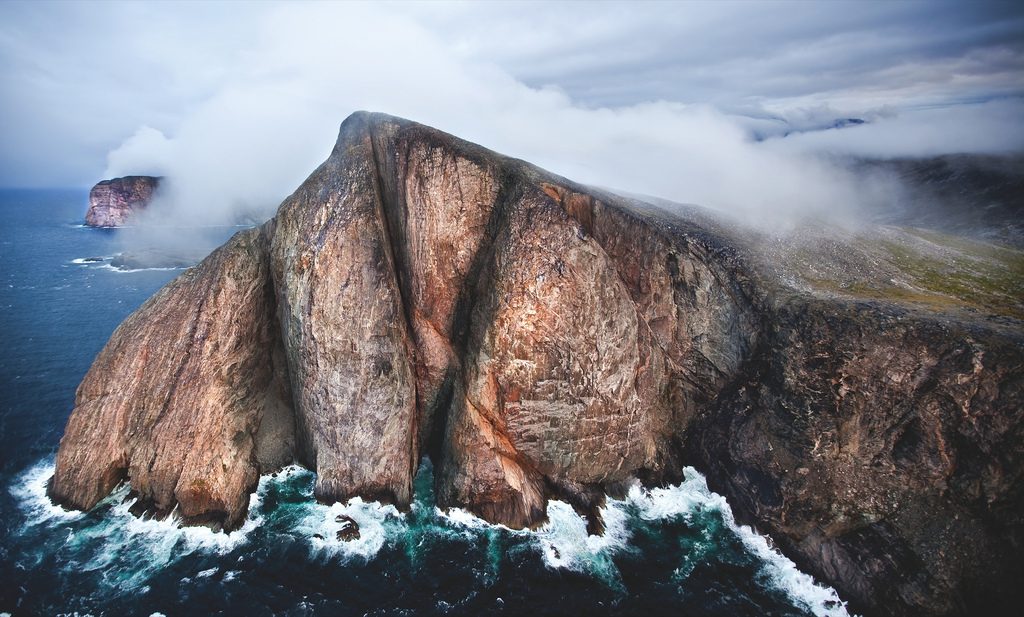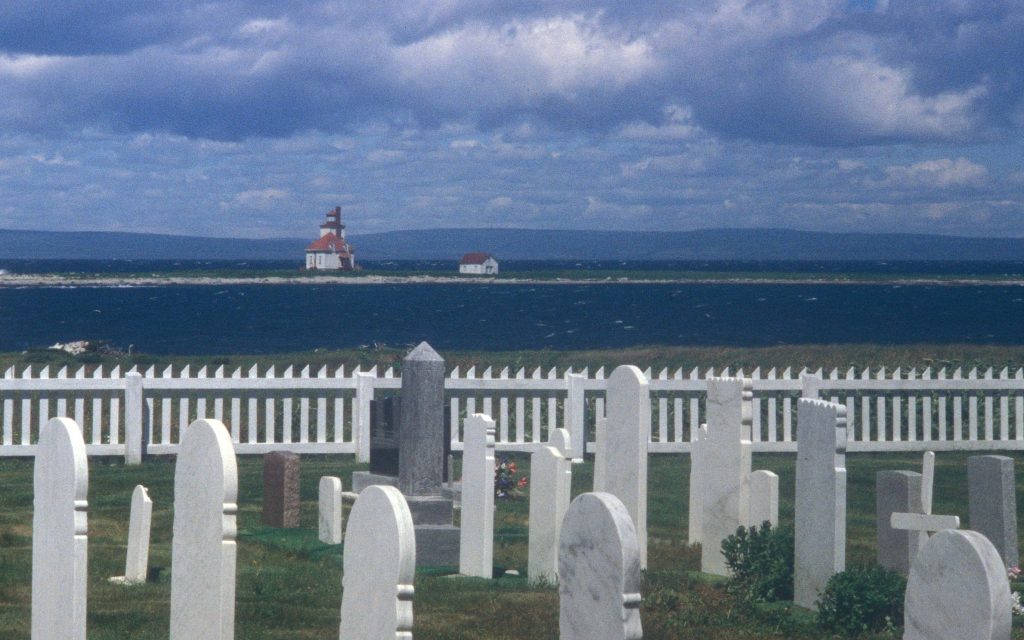Wrecking Fairies November 3, 2016
Author: Beach Combing | in : Contemporary , trackback
This experience from early twentieth-century Canada combines an unlikely set of the criminal and paranormal elements: sailing, wrecking and fairies. We are in Labrador and Beach has previously referenced this source – the autobiography of a local doctor – in a sasquatch post.
On one occasion, as late in the fall we were creeping up the Straits of Belle Isle in the only motor boat then in use there, our new toy broke down, and with a strong onshore wind we gradually drifted in toward the high cliffs. It was a heavy boat, and though we rowed our best we realized that we must soon be on the rocks, where a strong surf was breaking. So we lashed all our lines together and cast over our anchors, hoping to find bottom. Alas, the water was too deep. Darkness came on and the prospect of a long, weary night struggling for safety made us thrill with excitement. Suddenly a schooner’s lights, utterly unexpected, loomed up, coming head on toward us. Like Saul and his asses, we no longer cared about our craft so long as we escaped. At once we lashed the hurricane light on the boat-hook and waved it to and fro on high to make sure of attracting attention. To our dismay the schooner, now almost in hail, incontinently tacked, and, making for the open sea, soon left us far astern. We fired our guns, we shouted in unison, we lit flares. All to no purpose. Surely it must have been a phantom vessel sent to mock us. Suddenly our amateur engineer, who had all the time been working away at the scrap-heap of parts into which he had dismembered the motor, got a faint kick out of one cylinder a second a third, then two, three, and then a solitary one again. It was exactly like a case of blocked heart. But it was enough with our oars to make us move slowly ahead. By much stimulating and watchful nursing we limped along on the one cylinder, and about midnight found ourselves alongside the phantom ship, which we had followed into the harbour ‘afar off.’ Angry enough at their desertion of us in distress, we went aboard just to tell them what we thought of their behaviour. But their explanation entirely disarmed us.
So far so strange, but listen to what the local fishers have to say.
‘Them cliffs is haunted,’ said the skipper. ‘More’n one light’s been seen there than ever any man lit. When us saw you’se light flashing round right in on the cliffs, us knowed it was no place for Christian men that time o’ night. Us guessed it was just fairies or devils trying to toll us in.’ [270-1]
The coupling of ‘fairies’ and ‘demons’ might seem strange but in the twentieth century the fairies of Atlantic Canada were by far the worst of the fairies of the western world: running off with babies, kidnapping people lost in the wilderness, whipping schoolchildren who wandered into their swamps… Still, Beach knows of no other reference to wrecking fairies: drbeachcombing AT yahoo DOT com
Source: A Labrador doctor; the autobiography of Wilfred Thomason Grenfell (Boston 1919)
Leif at his brilliant best, 17 Nov 2016
At that time in Newfoundland and Labrador, there were not so many people. Folk all up and down the coast knew each other. Life was dangerous– men took considerable risks to save others and they did so as a matter of course. The schooner skipper almost certainly believed he had seen fairies or devils. Even though this seems incredible to us today, no other explanation suffices.
But where did the wrecking fairies come from? Were they natives or did they arrive from elsewhere?
Many in Newfoundland and Labrador have Celtic roots, and their fairies most likely came over from those very same lands.
Ireland is an island wrecking fairies might inhabit. Her first lighthouse dates from the medieval period [1], and many ships have run aground on her emerald coasts– more than a few due to the scourge of wrecking. In eighteenth century Ireland, it was a capital offense to ‘put out false lights with the intention to bring any ship or vessel into danger’ [2].
Irish Fairy belief existed well into the nineteenth century, as evidenced by the Mary Doheny case [3]. The Will-o’the wisp manifests in the Celtic twilight, and of the Sidhe it is said that ‘all treasure of wrecked ships is theirs.’ [4]
So Ireland holds all the elements for wrecking fairies– but did they first ply this foul trade in on that island, or did they learn it on the forlorn coasts of the New World?
This question my meager search cannot answer.
As an aside, Wilfred Thomason Grenfell was much more than a ‘local doctor’. In 1892, Grenfell founded a mission which grew to provide medical care, schools, an orphanage, cooperatives, and spiritual instruction to indigenous people and settlers along the coasts of Labrador and Newfoundland’s Great Northern Peninsula. These peoples were the poorest in the western world, and before Grenfell they lived entirely without medical care. In 1908, Grenfell nearly lost his life trying to reach a patient in need. He became internationally famous and received Oxford’s first ever honorary doctorate of medicine. Grenfell is today gratefully remembered in the province he served.
Cheers,
Leif
[1] Wikipedia’s ‘Hook lighthouse’ page.
[2] Exploris acquarium website: Wrecking: lured into the light for personal gain.
[3] Young, Simon. The witch, the weird, and the wonderful.
Irish fairies and Irish food: The Mary Doheny Trial. 2 December 2015.
[4] SacredTexts.com: Popular notions concerning the Sidhe race
Leif also donates a superb photograph: ‘the lighthouse at Flowers Cove, Newfoundland, with the Strait of Belle Isle and Labrador in the background’



